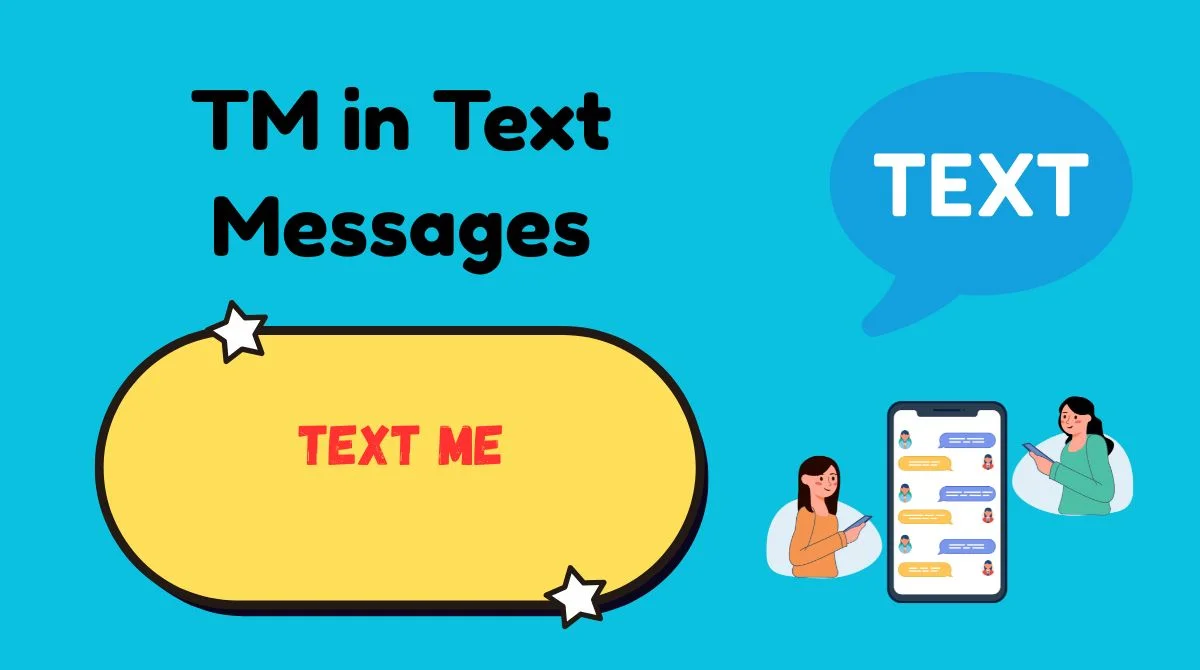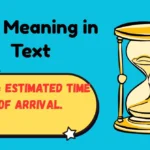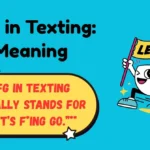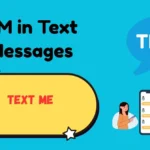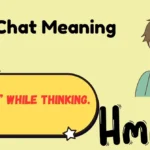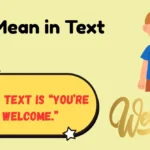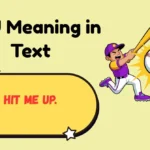Text messages are filled with abbreviations, and sometimes they leave you scratching your head. One of those tricky ones is “TM.” Depending on who you’re texting and where the conversation happens, this little abbreviation can mean Text Me, Trust Me, Too Much, or even Trademark.
So, how do you figure out the correct meaning when you see “TM” in a text? That’s exactly what this guide is about. By the end, you’ll know how to interpret it in different situations, when to use it, and when to avoid it.
What Does “TM” Mean in Text Messages?
The abbreviation “TM” isn’t tied to a single meaning. Instead, it shifts depending on the tone, relationship, and context. Let’s break down the most common interpretations:
- Text Me – The most popular meaning in casual texting.
- Trust Me – Often used in reassuring or persuasive conversations.
- Too Much – Used to react when something feels extreme, exaggerated, or overwhelming.
- Trademark (™) – A legal or branding reference, sometimes dropped casually in online spaces.
There are also less common meanings:
- Tomorrow – In some text circles, “TM” works as shorthand for tomorrow.
- Team – Certain gamers or online communities shorten “team” as “TM.”
👉 But for most people, especially in everyday text messages, “TM” is read as either Text Me, Trust Me, or Too Much.
How Context Changes the Meaning of “TM”
One abbreviation. Four or more meanings. The difference? Context.
Here’s how to spot the correct usage:
- If it’s a casual chat with friends, chances are it means Text Me.
- If it’s part of a reassuring sentence, it probably means Trust Me.
- If someone is reacting with humor or exaggeration, it could mean Too Much.
- If you’re reading an email or official statement, it likely points to Trademark.
Analogy: Think of “TM” like a chameleon—it changes color depending on the background.
Everyday Uses of “TM” (With Examples)
Let’s see how “TM” works in different texting scenarios:
Casual Chats
- Friend: “I’ll meet you at the café.”
- You: “Cool, TM when you leave.”
Romantic/Close Relationship
- Partner: “I’m telling you this plan will work.”
- You: “TM, I’ll trust you.”
Group Chats / Social Media
-
Post: “That outfit is TM 😂”
(Here it means “Too Much” in a funny way.)
Work/Professional Setting
-
“Apple™ is expected to announce its new product tomorrow.”
(Here, TM refers to the legal symbol for Trademark.)
When NOT to Use “TM”
While “TM” works in casual chats, it doesn’t always fit. Here’s when to avoid it:
- Formal communication: Don’t use “TM” in business emails, cover letters, or academic papers.
- Serious conversations: Abbreviations can look dismissive if the tone is emotional.
- Cross-generational chats: Not everyone understands shorthand, especially older audiences.
Pro Tip: If clarity matters, spell it out.
Common Misinterpretations of “TM”
Even simple abbreviations can lead to confusion. Here are the most frequent mix-ups:
- Mixing up Text Me and Trademark – A friend might think you’re asking them to call you, while you’re talking about a brand.
- Confusing sarcasm with sincerity – “That’s TM!” could mean funny exaggeration, or it could be misunderstood as criticism.
- Overusing shorthand – Too many abbreviations make messages look messy and impersonal.
Alternatives to “TM” (Clearer Options)
Sometimes it’s better to just say what you mean. Here are natural alternatives for each interpretation of TM:
| TM Meaning | Alternatives | Example |
|---|---|---|
| Text Me | “Message me,” “Ping me,” “Hit me up” | “Hit me up when you’re free.” |
| Trust Me | “Believe me,” “For real,” “Honestly” | “Honestly, it’ll be fine.” |
| Too Much | “Over the top,” “Extra,” “Wild” | “That’s over the top 😂.” |
| Trademark | Use ™ or ® symbol | “Nike® is a registered brand.” |
Cultural and Generational Factors
Language evolves, and “TM” is a perfect example.
- Younger generations (Gen Z, Millennials) are more likely to use “TM” for Text Me or Too Much.
- Older generations might only recognize TM as Trademark.
- Regional differences: In the US, “TM” often means Text Me, while in some Asian texting cultures, it can mean Tomorrow.
- Social media platforms: Twitter, TikTok, and Instagram often use “TM” as slang for “Too Much.”
Real-World Examples of “TM” in Use
Let’s break down how TM looks in real life:
- Friendly Text:
- “I’m leaving work now, TM when you get home.” (Text Me)
- Work Chat:
- “Remember to use the ™ symbol when referencing brand names.” (Trademark)
- Social Media Post:
- “Her laugh is TM 😂.” (Too Much)
- Romantic Conversation:
- “TM, I’ll never hurt you.” (Trust Me)
Best Practices for Using “TM”
To avoid awkward misinterpretations, keep these rules in mind:
- Know your audience. Don’t assume everyone knows the same slang.
- Keep it casual. Use “TM” mainly in friendly chats or social media.
- Stay clear in professional settings. If it’s business, spell it out.
- Avoid overloading abbreviations. Too much shorthand reduces readability.
Quote to Remember:
“Clarity in communication is more powerful than brevity in confusion.”
FAQs About “TM” in Text Messages
Does “TM” always mean Text Me?
No. While “Text Me” is the most common, it can also mean Trust Me, Too Much, or Trademark depending on context.
Is “TM” outdated slang?
Not really. It’s still common in casual texting and social media, though younger users sometimes prefer emojis or alternatives.
Should I use “TM” in business texts?
Avoid it. In professional communication, spell things out or use the ™ symbol for trademarks.
What’s the difference between “TM” and the ™ symbol?
“TM” typed in text is shorthand. The ™ symbol is a legal mark used for branding.
Can “TM” mean Tomorrow?
Yes, but it’s not as popular. Some people, especially in regional texting styles, still use it for Tomorrow.
Conclusion
The abbreviation “TM” in text messages can mean a handful of different things—Text Me, Trust Me, Too Much, or Trademark. The right meaning depends on tone, audience, and context.
When in doubt, always choose clarity. Use “TM” casually with friends, but switch to full words or the proper ™ symbol in professional or formal situations. That way, you’ll avoid misunderstandings while still keeping your texts natural and fun.
